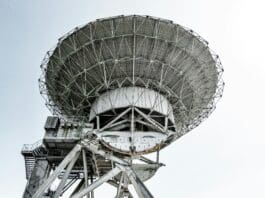This post is also available in:
 עברית (Hebrew)
עברית (Hebrew)
Traditional and widely-used methods in underwater inspections often involve challenges with time, energy, monetary costs, and human risks, where workers would need to use boats to drive out to offshore platforms and make multiple dives for their inspections.
A groundbreaking ‘Sea-Air Integrated Drone’ aims to modernize offshore and marine operations. The drone demonstrated its capabilities, high working efficiency, and minimized manpower required during a flight showcase in Yokohama, Japan.
The drone, which supports mobile communication and autonomous flight and remote control, transmits video imagery from aerial and underwater cameras in real time and features an acoustic positioning device that allows for checking the location information underwater where the satellite positioning system (GPS) cannot be used.
In the demonstration flight, underwater photography was carried out assuming the inspection of offshore wind farm equipment and the survey of the condition of underwater beds that will become fish reefs, according to offshorewind.biz.
The sea-to-air drone is jointly manufactured by telecom operator KDDI, commercial drone manufacturer PRODRONE, and underwater robotics manufacturer QYSEA Technology, featuring the combination of a heavy-duty aerial drone and the underwater industrial-class FIFISH PRO V6 PLUS ROV remotely operated solution.
It is the first commercial drone capable of operating seamlessly through land, sea, and air. Through long-range mobile communications, the drone is operated remotely to fly to its preset route at sea. After landing at its designated location, the FIFISH ROV is released and deployed to work.
The pilot is then able to remotely operate with the ROV from a safe working location, and perform a variety of inspection, maintenance, and repair work underwater.
The platform provides a breakthrough within remote marine-based operational work. Without the need to leave their onshore working location, the operator can deliver inspections with real-time visual feedback and operate through underwater environments with a variety of sampling, measurement, and manipulation tools, as well as be able to live-stream operations for multi-person collaborations.
Among the applications: In offshore wind power, the drone can be deployed to perform complex inspections and maintenance work on its frames and foundations to greatly reduce human risks. In the world of aquaculture, the drone is able to fly out to monitor its livestock and crops, as well as perform maintenance and repair work through the ROV’s multitude of add-on tools. Other marine-based applications include operations involving search and recovery, various other subsea infrastructures, etc., according to usavision.com.




